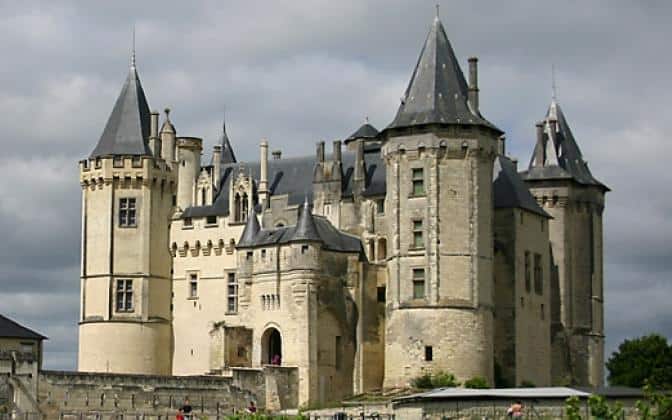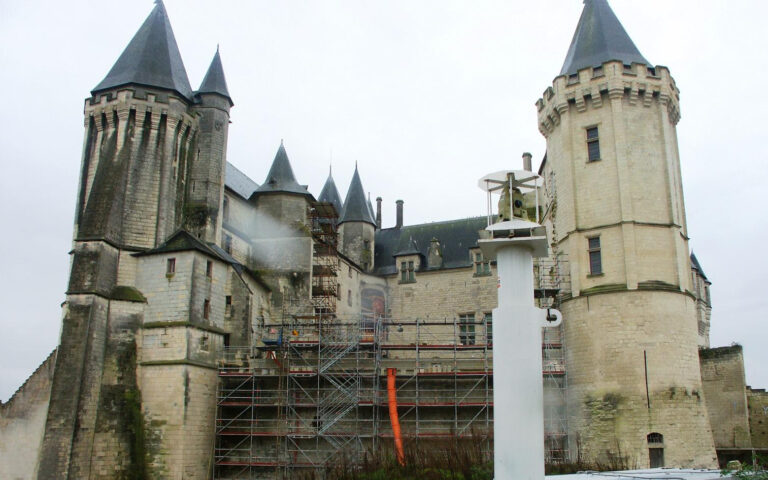Client:
Saumur Val de Loire - Cultural Affairs Department
Saumur Val de Loire - Cultural Affairs Department link opens in a new tab

A sudden collapse
On 22 April 2001, the western section of the northern rampart of the Château de Saumur – one of the most beautiful medieval castles in the Loire – collapsed, damaging parts of the homes located below.
The DRAC (Regional Directorate of Cultural Affairs) then had to carry out work to stabilise the subsoil and rebuild the damaged rampart.
The works’ project manager opted for the observational method, meaning that the various geotechnical structures had to be completed according to observations of their behaviour during construction.
This solution required the installation of high-quality testing methods.
Automated topographic monitoring
Sixense was entrusted with carrying out real-time monitoring of movements of the north wing and the north-west tower of the castle during the most sensitive phases of the work.
To do this, Sixense opted for automated topographic monitoring. This lasted for four years, throughout the stabilisation work. This monitoring was combined with a system of automatic alerts sent to ‘on-call’ staff if thresholds were exceeded, as well as real-time access to data via the internet for all project participants.
To carry out this monitoring, Sixense used three Cyclops (Sixense motorised total station theodolites) which measured the deformations in x, y, z of around 100 prisms installed by specialists in working at height (mountaineers).
Cyclops
years of system maintenance




